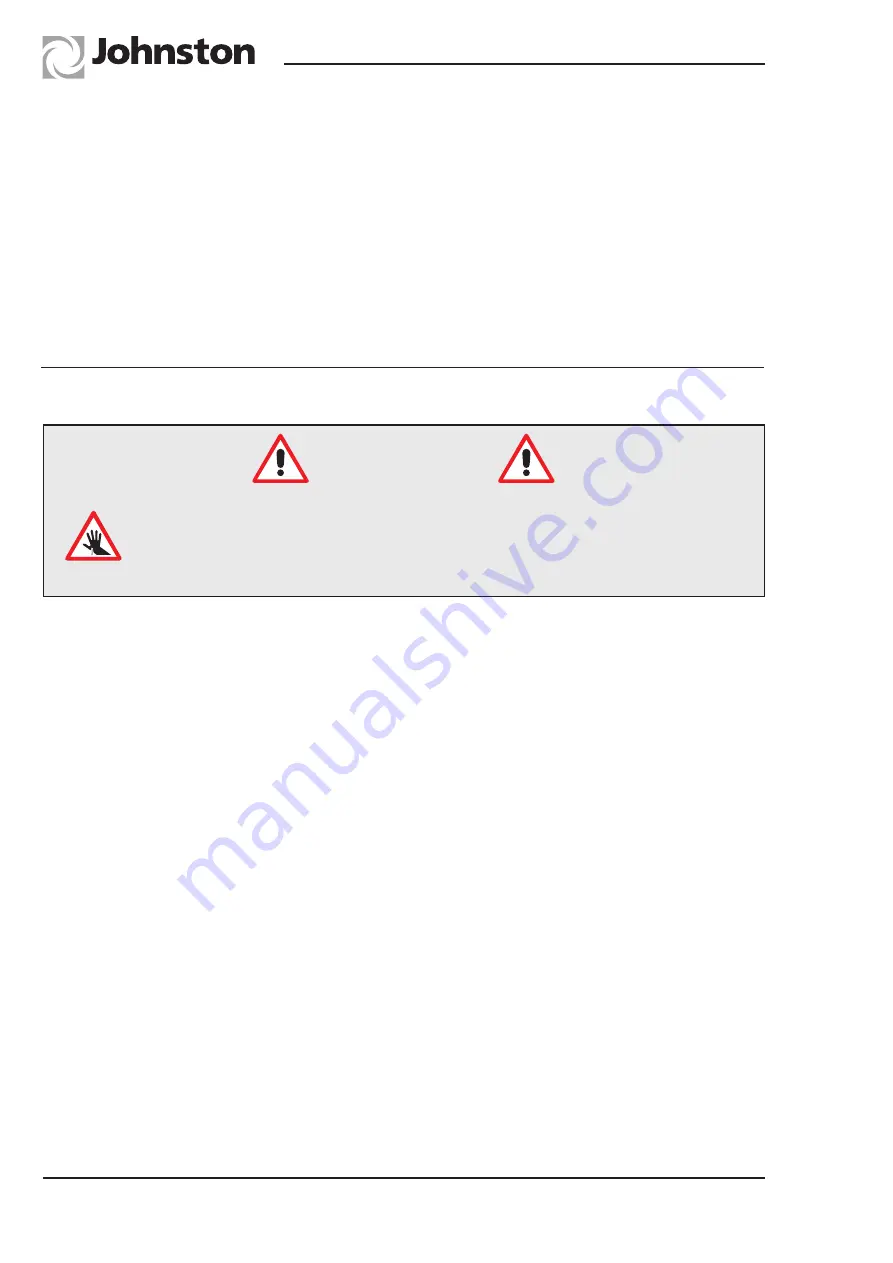
RT655 Operator’s Guide
OG3:10
Chapter - Operation
Page Issue A
Emergency Discharge Pump
In the event of an auxiliary or electrical system malfunction , the body can be raised by:-
-
Turning on the chassis engine
-
Turn on the sweepger ignition
-
Check the green light on the discharge pendant
-
Push buttons DD-C and F to raise the body so that the body prop can clear the locking steps
NB: This system can also be used to open the rear door. So is applicable for discharging loads
when in dusty environments.
The body flush out hydrant hose connection (item 22, Fig. 1) is provided and when connected will
flush out the various ducts and hoses.
1. With the nozzle hood (pick-up hood) in the stowed position, start the auxiliary engine and
increase the speed to approximately 1500 rpm.
2. Slowly turn on the hydrant water. This procedure will automatically wash out the internal body,
ductwork and SepaVac (dust separator), the blower housing, the blower fan and the nozzle
pressure hose, along with the underside of the nozzle hood and the nozzle suction hose.
3. After about 5 minutes, lower the hood to the ground and continue the flushing cycle. This will
collect all the water into the body flushing the dirty water from the surrounding areas.
4. Turn the hydrant water off. Raise the nozzle hood (pick-up head) to the stowed position and
open the rear door to drain off the waste water.
5. Whilst the body is in the raised position, stow on the auto prop. Turn the hydrant water back
on to wash out the internal SepaVac cover that will have hinged clear of the fan inlet to allow
the fan side of the SepaVac to be cleaned.
6. The waste water will run through the SepaVac discharge covers to thoroughly clean the total
body fan system.
7. Leave the rear door partially open to allow moisture to escape and prolong the life of the rear
door seal.
End of Day Cleaning Routine
Sharp objects warning - there can be a risk of injury from sharp objects such
as discarded hypodermic needles becoming lodged in the sweeping system.
The use of ‘needle stick gloves’ is recommended when changing brushes,
using the Wanderhose/Littasnatch and when cleaning out the machine.
Safety Notice






























